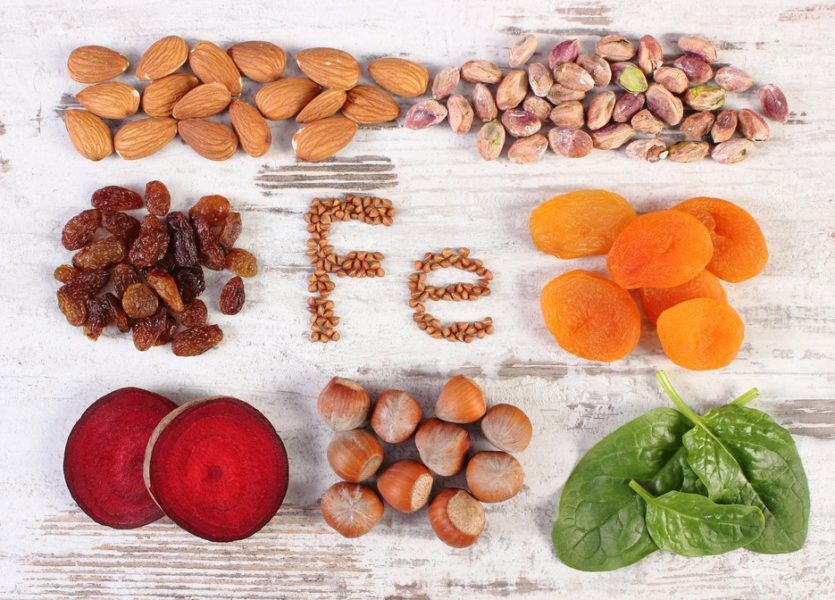
Iron and Plant-based Nutrition
Do you feel tired? Iron deficiency is a possible explanation, as fatigue and lack of energy are among the most common symptoms! Furthermore, if you follow a plant-based diet, you are a vegetarian or vegan, you can look for and cover your iron needs through plant sources; besides following the example of our favorite child hero Popey who used to consume canned spinach, in situations where he needed extra power and energy.
The Importance of Iron for the Human Body
Iron, when it comes to life, is a mineral much more precious than gold, necessary for human growth. The iron’s content in the body is directly related to health. Its significance is perceived by considering that every cell in the body needs iron.
Although iron is the second most abundant mineral in the earth’s crust, iron deficiency is the most common cause of anemia both in the developed and the under-developed countries. Anemia, according to the World Health Organization (WHO), is the most common health problem worldwide, related to nutrition. The most vulnerable groups are:
- Infants and Children
- Women of childbearing age
- Pregnant Women
- The Elderly
- Destitute people
- People with gastrointestinal problems
- People suffering from cancer
Plant sources of Iron
The four richest plant origin sources of Iron, according to the USDA official database, are the aromatic herbs:
- Thyme
- Basil
- Spearmint
- Marjoram
with up to hundred times more Iron concentration compared to traditional animal sources of iron (e.g. lamb chops).
Obviously, herbs are used in small quantities, so it is also necessary the diet to be rich in other basic plant-based foods that are sources of Iron.
Excellent and good sources of plant-based foods in Iron, based on the reports of the National Health System of England, the British Nutrition Institute and the Association of Dietitians of Canada, are the following foods:
- Pulses such as Lentils, Beans, Chickpeas and Fava beans
- Nuts & Seeds such as Almonds, Sesame seeds, Sunflower seeds, Pumpkin seeds, Walnuts, Peanuts, Cashews, Macadamia
- Dried Fruits such as Raisins, Dried Figs, Apricots, Peaches, Sun-dried Tomatoes
- Cocoa and Dark Chocolate with high cocoa content
- Whole Grain Cereals such as Quinoa, Oats, Barley, Millet
- Dark Leafy Greens such as Spinach, Beetroot Leaves, Parsley
How to Increase Iron Absorption from Plant Foods
The heme Iron found in meat and animal products is generally more easily absorbed by the human body than the non-heme Iron found in plants.
Furthermore, the percentage of Iron absorbed by human body, does not only depend on its content in the food but also on its bioavailability.
To enhance the Iron bioavailability, ie the absorption of non-heme Iron, it should be done by consuming foods rich or sources in Vitamin C and β-Carotene (Pro Vitamin A), since Vitamin C is proven to be the strongest absorption enhancer for non-heme iron.
To increase Iron absorption, think smartly and implement the following strategies:
- Eat at the same time foods that are Sources of Vitamin C, such as:
- Citrus Juice, oranges, grapefruit, mandarins
- Adding Orange peel
- Peppers
- Kiwi
- Strawberries
- Melon
- Corinthian Raisin
- Broccoli
- Eat at the same time foods that are Sources in β-Carotene, such as:
- Carrots
- Apricots
- Avoid consuming Caffeine during the meal such as coffee and tea, since caffeine will reduce the absorption of Ιron by the body
- Avoid consuming calcium-rich foods like dairy foods in the same meal, as Calcium acts competitively with Iron, adversely affecting the absorption of both vital trace elements by the body
Undoubtedly, nature always provides with the solutions for our proper nutrition, but it is up to us to have the right information and critical thinking to benefit from the nutritional characteristics of the foods.



